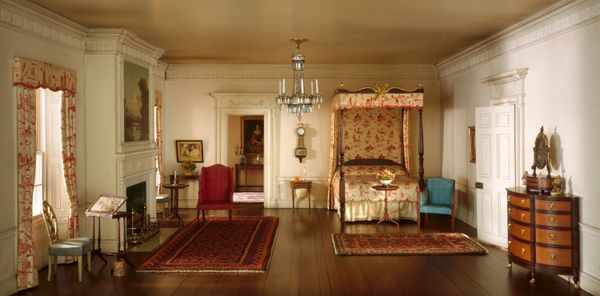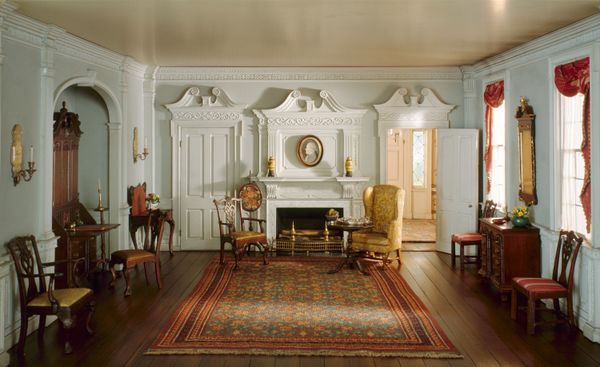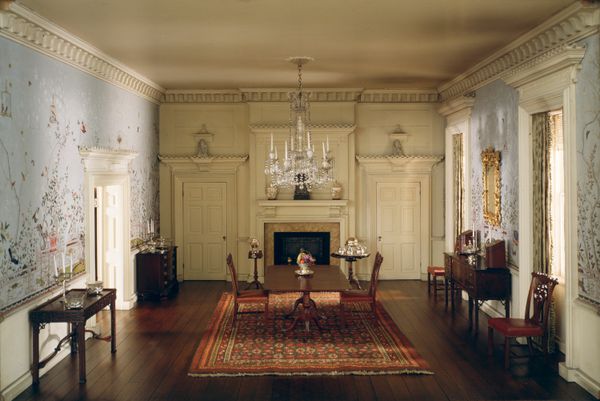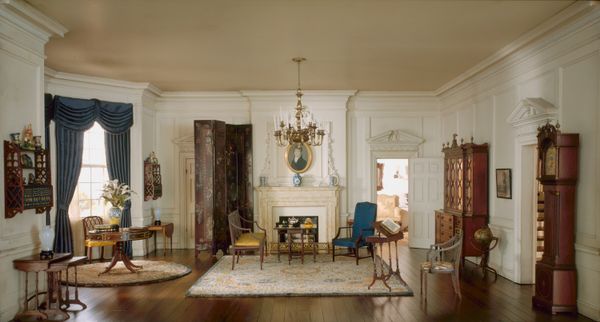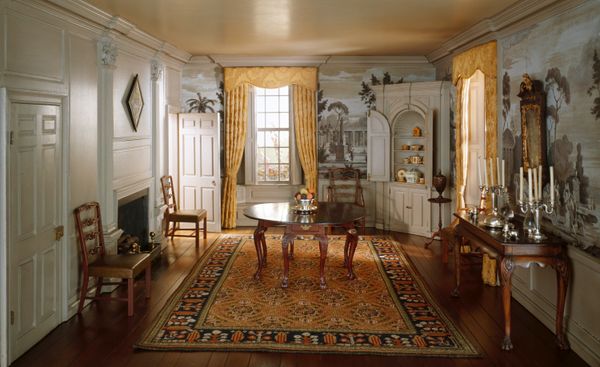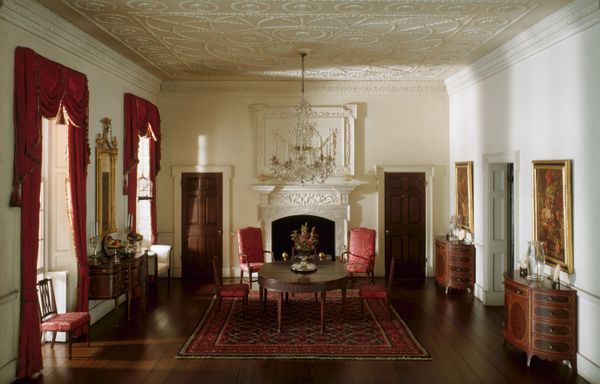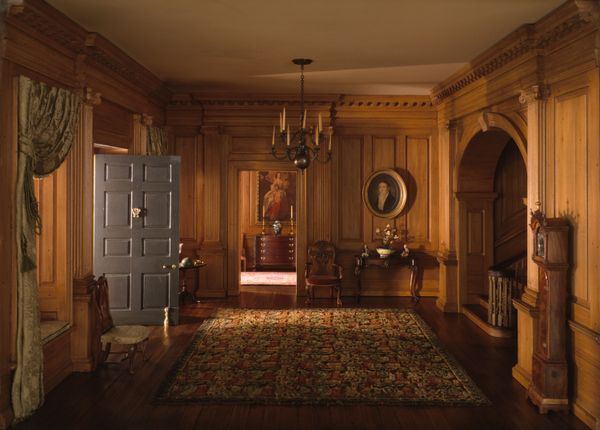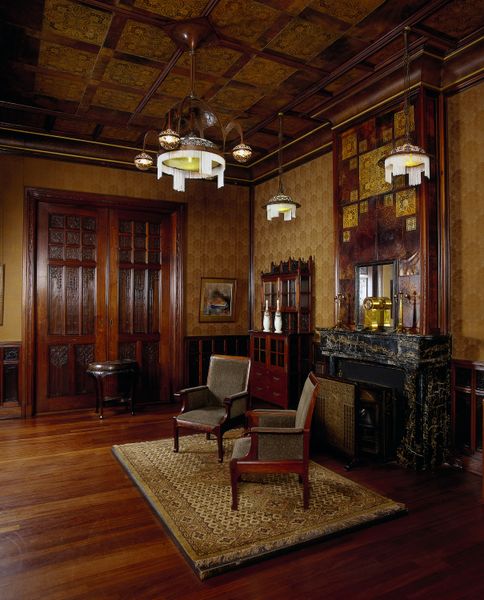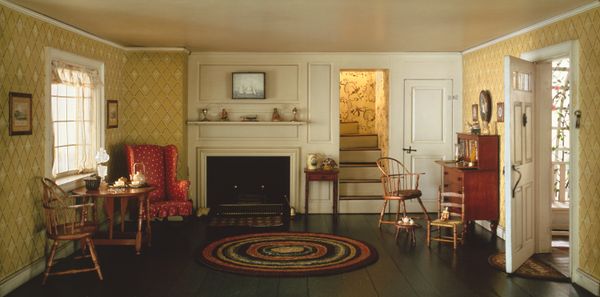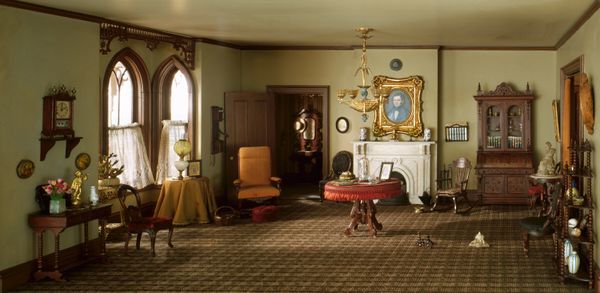
A14: Pennsylvania Drawing Room, 1834-36 c. 1940
0:00
0:00
photography, architecture
#
interior architecture
#
interior design
#
photography
#
interior architecture photography
#
interior photography
#
architecture
#
realism
Dimensions: Interior: 13 1/4 × 23 3/4 × 20 1/4 in. (33.125 × 59.375 × 50.625 cm) Scale: 1 inch = 1 foot
Copyright: Public Domain
Editor: This photograph captures Narcissa Niblack Thorne’s "Pennsylvania Drawing Room, 1834-36," made around 1940. It's a meticulously crafted miniature interior, and the first thing I notice is its vibrant color scheme and incredibly ordered symmetry. What can you tell us about this drawing room? Curator: What immediately strikes me is the re-staging of this space – both a capture and recreation of a space. Considering its date of creation, circa 1940, it prompts reflections on nostalgia and the preservation of particular narratives, particularly in relation to class and power. Who inhabited and benefited from such a drawing room, and whose stories are marginalized or erased by its aesthetic representation? Editor: That's a great point, one I hadn't considered at all. So, is the artist consciously engaging with this history? Curator: Precisely! The yellow walls, the elaborate chandelier, all speak to a certain cultivated wealth, and that evokes specific power structures within society at that time, while prompting thoughts about how these displays of wealth functioned historically and what continuities, or breaks, exist today. Do you notice any elements that speak to evolving social customs? Editor: The more I look, the more I feel the order is exaggerated. The chairs are carefully spaced, almost as if staging a scene but where real life might not mirror that exactly. Maybe a resistance or perhaps a social commentary? Curator: Indeed! This image offers a window into reflecting on themes of class, gender, and the very act of representation. The composition invites viewers to reflect on both the comforts and potential constraints of these historical spaces. Editor: Thanks for offering a new perspective, I definitely understand more of what I am looking at. Curator: Likewise, I'll carry with me your astute observations of staging as resistance and commentary.
Comments
No comments
Be the first to comment and join the conversation on the ultimate creative platform.
